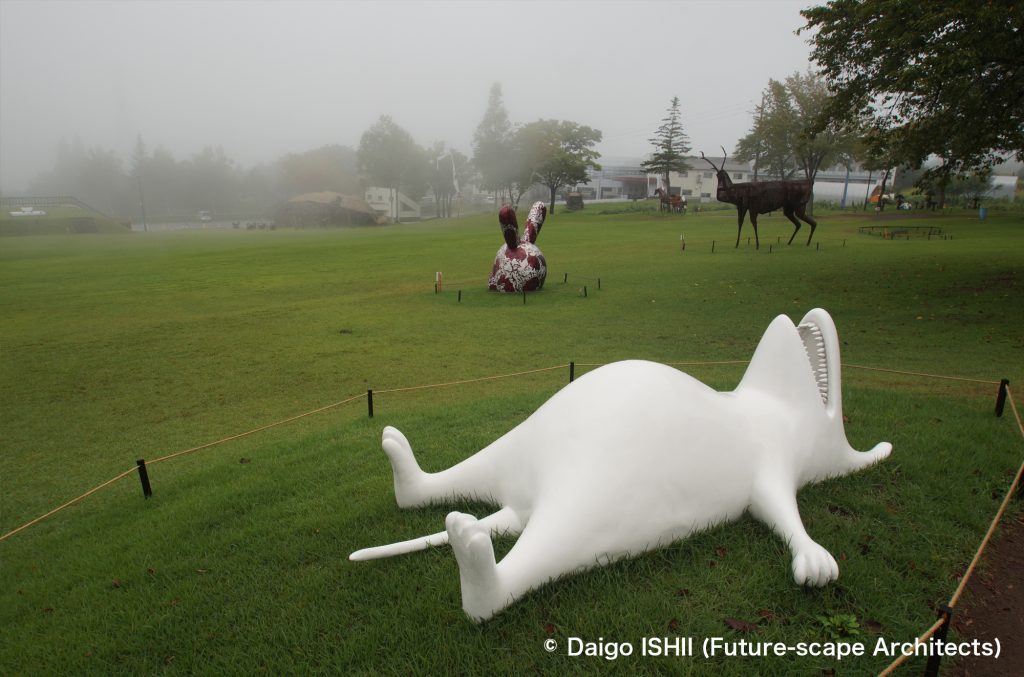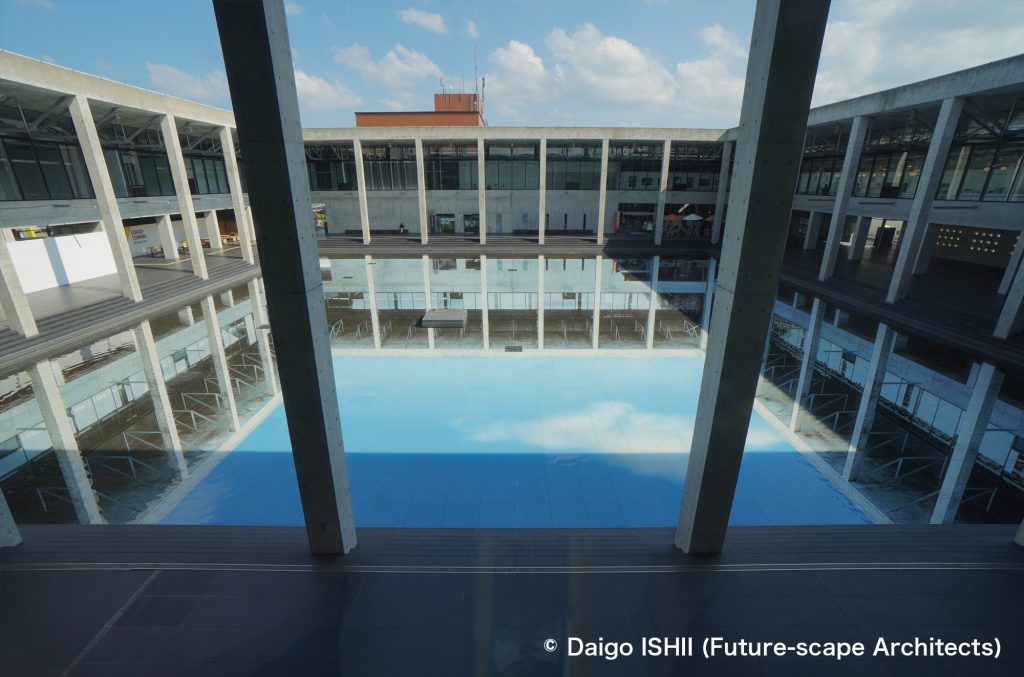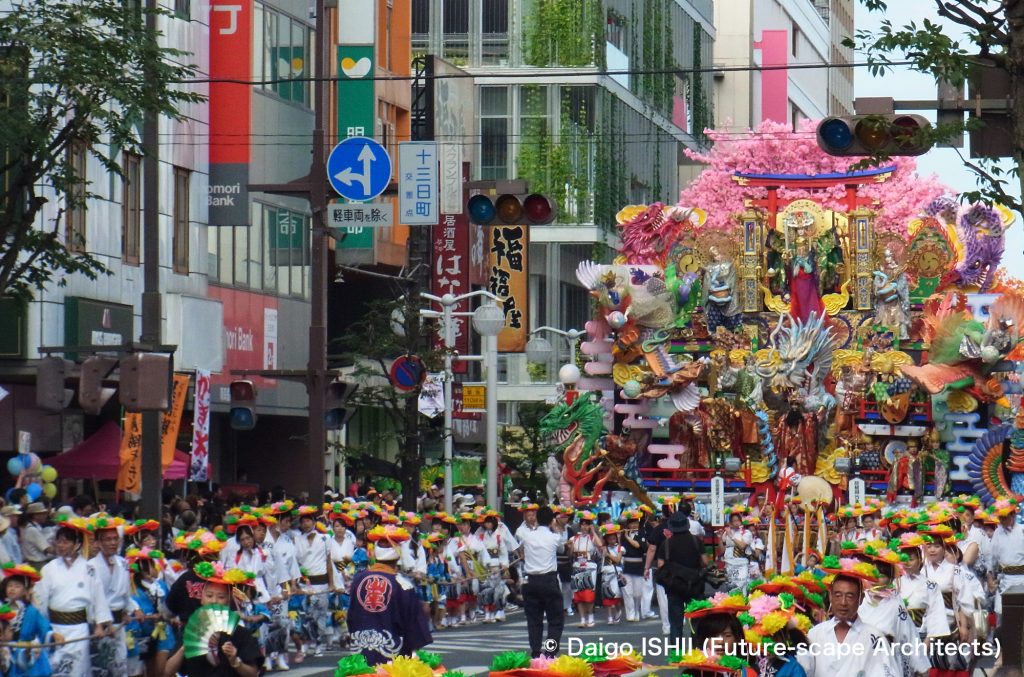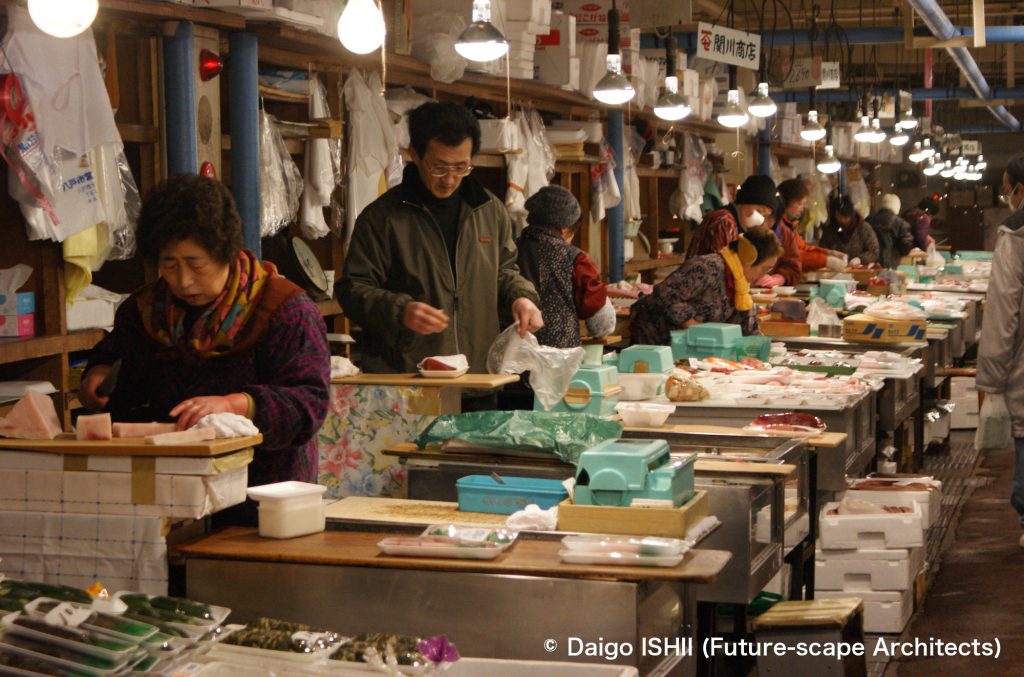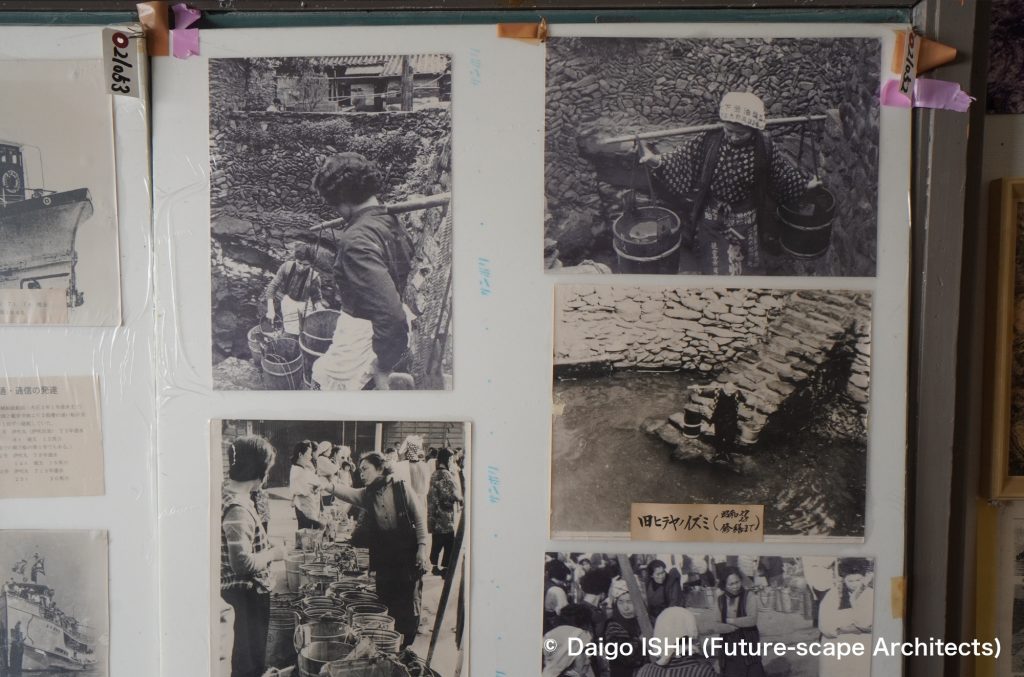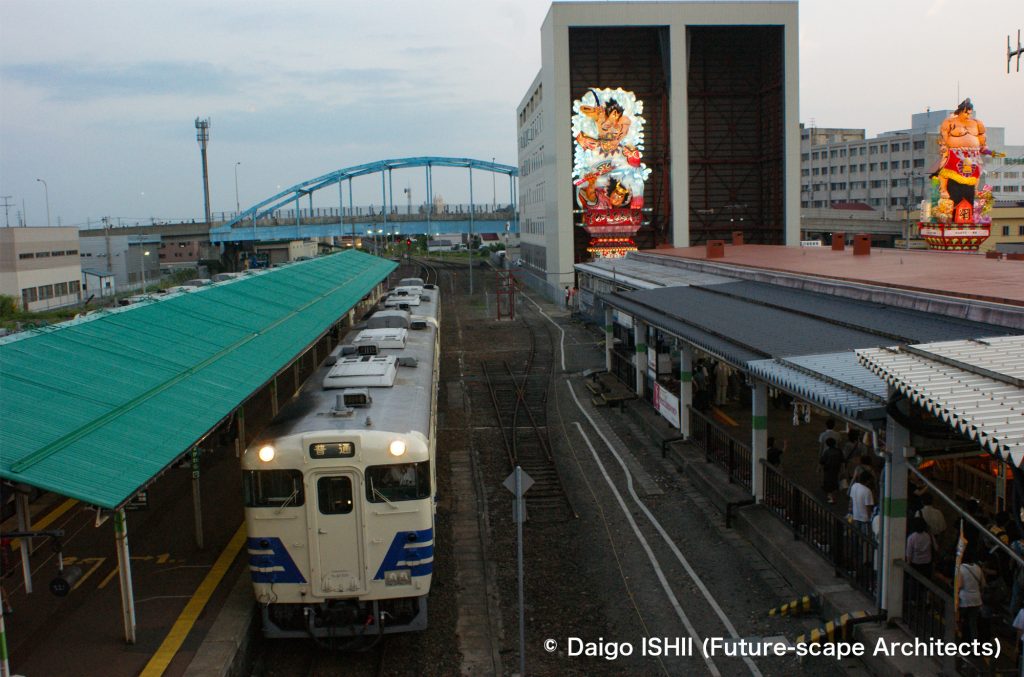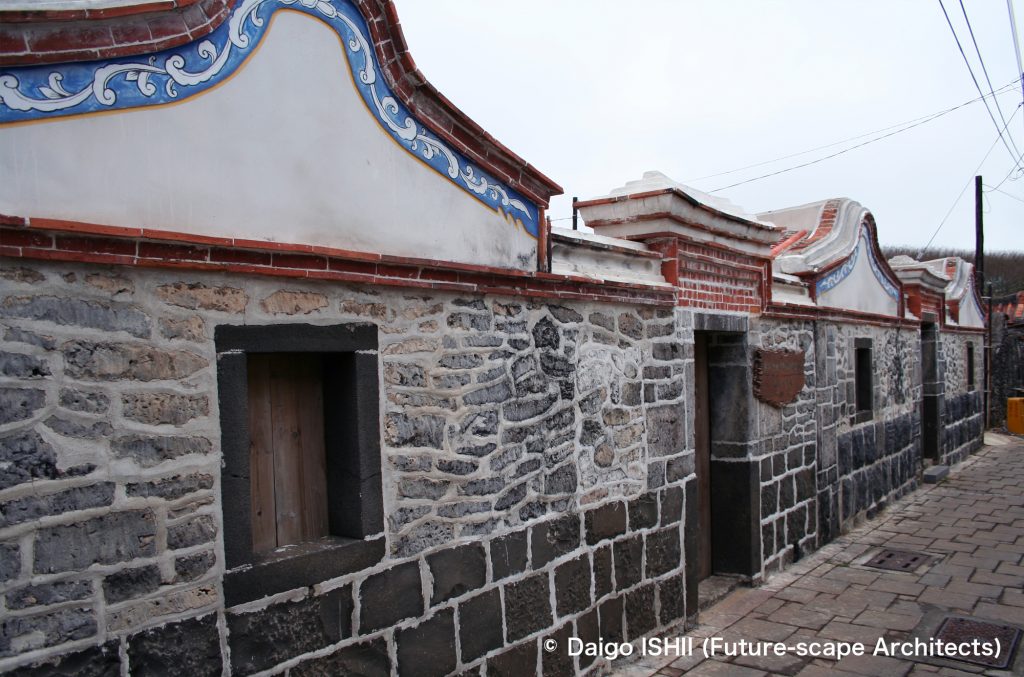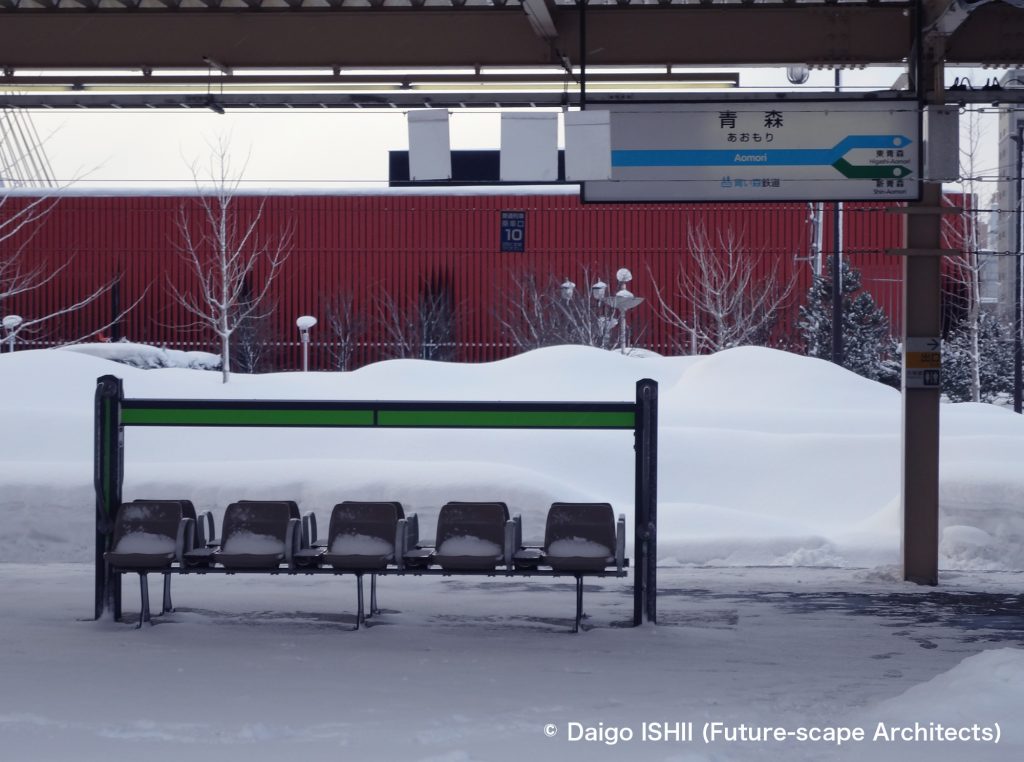八戸を代表する冬の祭り、2月のえんぶり。
The festival that represents the winter in Hachinohe is Emburi.

”Tayu-s” as the performer of Emburi dance "Dosan Emburi" in the highlight that all groups perform Emburi on the main street in the downtown.
えんぶりは、農耕儀礼が原型の、周辺の農村のお祭りでした。集落ごとの祭りが、明治維新の際、旧習として一度廃止されましたが、1881年、興業プロモーターの大沢多聞らが復活。中心街活性化として、全えんぶり組が一斉に舞を披露する形になりました。
初日は、午前7時開始。神社の拝殿前で、各組が舞を奉納した後、境内と待機の広場で舞を披露。やがて、全組が大行列を組んで中心街へ進みます。30組という数が、八戸の時間の厚みを示します。
号砲とともに、大通りに全組が並び、一斉に舞を披露。ビル街を埋め尽くす舞とお囃子に圧倒されます。集落で地元民に披露するだけなら、絶えていたかもしれませんが、全組がまとまって、大観客の前で披露する大沢多聞の仕掛けが、続けるモチベーションとなり、切磋琢磨の力となっています。
40分後、再び号砲が空に鳴り響き終了。いつもあっという間です。ただし、お楽しみはまだまだ。かがり火の中、呉服商のお屋敷で開かれる「お庭えんぶり」は、昔、有力者のお屋敷で舞を披露した風習の再現。そして、数日間にわたり見掛ける門付け。おや、演者に子供がいます。平日なのに、学校に行かず大丈夫なのか。ご心配なく。八戸では、門付けに回る子供は出席扱い。なんて粋な街!
Emburi derives from agricultural rites and was a festival in the rural area. The festival for each village was once abolished as an old custom after the Meiji Restoration. It was revived in 1881 by Tamon Osawa, an entertainment promoter, to revitalize the downtown with the form that all groups danced together.
The first day starts at 7 am. In front of the shrine's worship hall, each group dedicates the dance. Afterward, they dance the precincts. Eventually, all groups line up and proceed to the downtown.
Along with the signal gun, 30 groups line up on the main street and dance together at once. The dance and music are overwhelming. It may have become extinct if only showed to the locals in the village. The system that all groups show in front of a large audience becomes motivation to continue and the power to train hard.
40 minutes later, the signal gun again rings, and the dance ended. Too short! However, there is still more fun. "Garden Emburi" held at the old mansion is a reproduction of the custom that they had danced at a mansion of influential people. And "Kadoduke" (the performance from door to door for donation) performed for several days. There are children among the performers. They don't need to go to school on a weekday? In Hachinohe, children who take a "Kadoduke" are treated as attendees. What a wonderful city!
舞の奉納 / Dedication of the Emburi dance
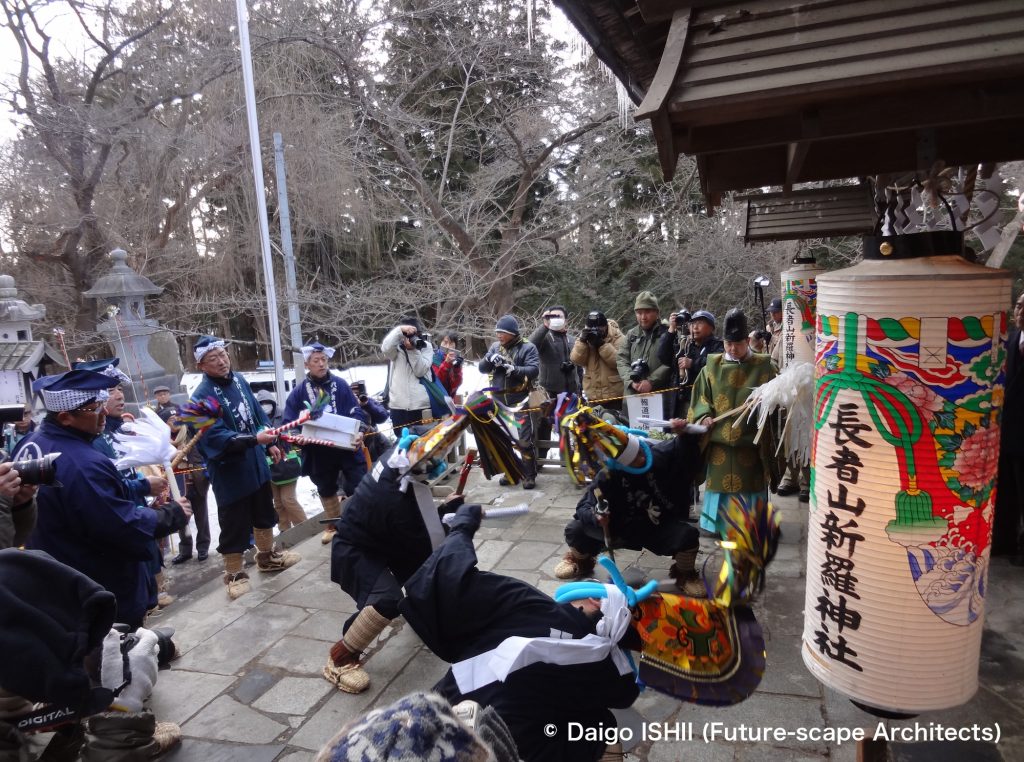
The dedication of the Emburi dance in front of the shrine's worship hall at 7 am.

The dedication of the Emburi dance in front of the shrine's worship hall at 7 am.
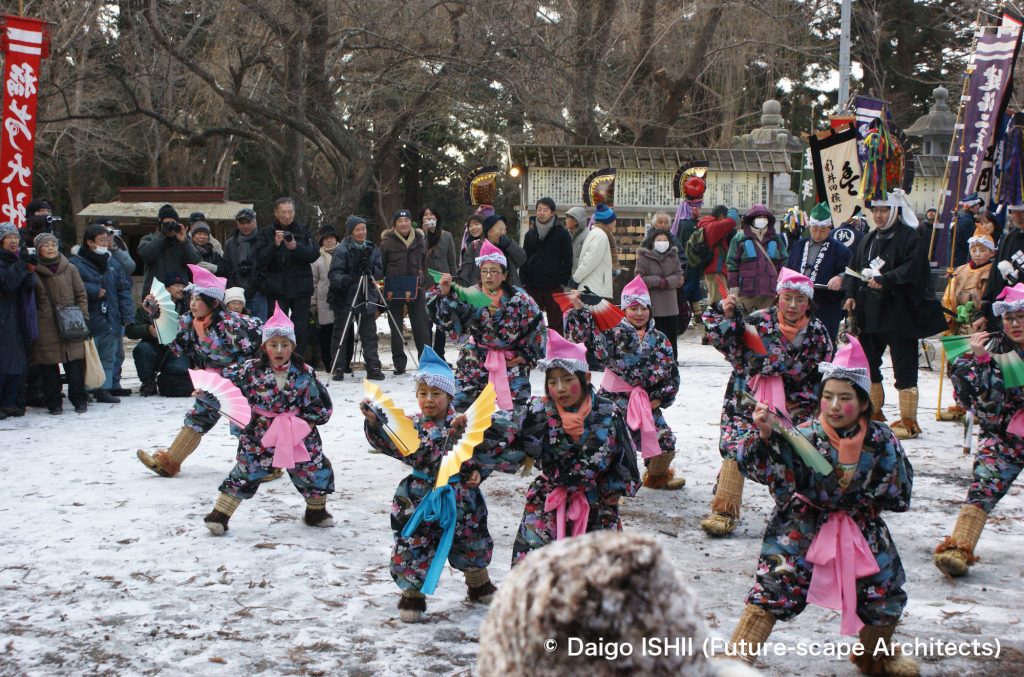
Entertainments for blessing performed by children after the dedication of the Emburi dance in front of the shrine's worship hall.
中心街への行進 / March to the main street

30 groups line up and proceed from the shrine to the main street in the downtown.
一斉摺り / Issei-zuri
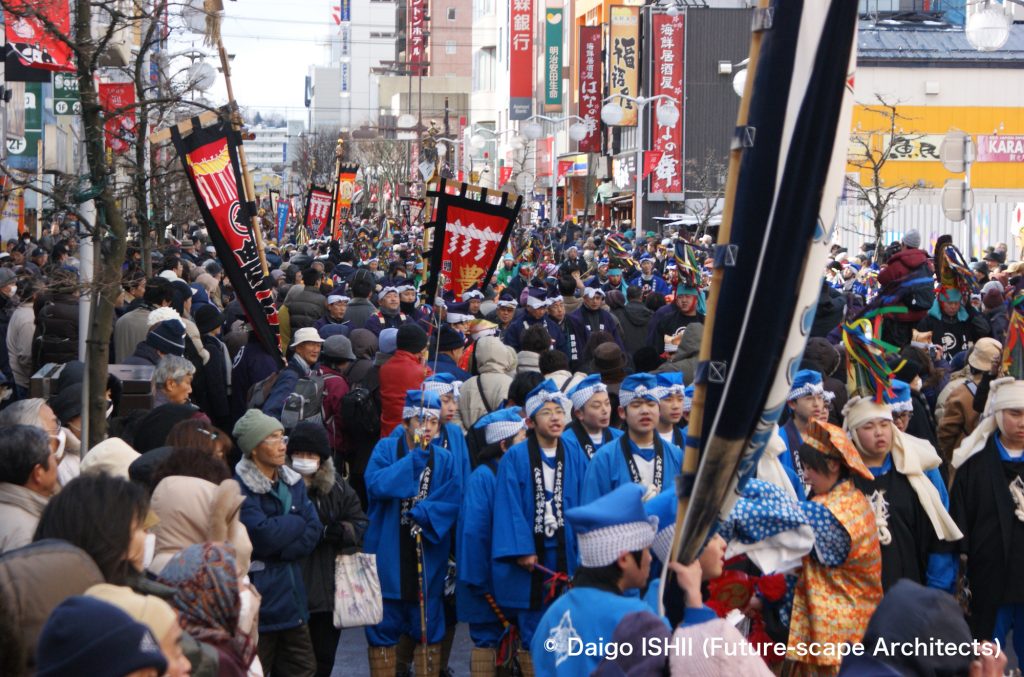
In "Issei-zuri", All groups perform Emburi on the main street in the downtown.
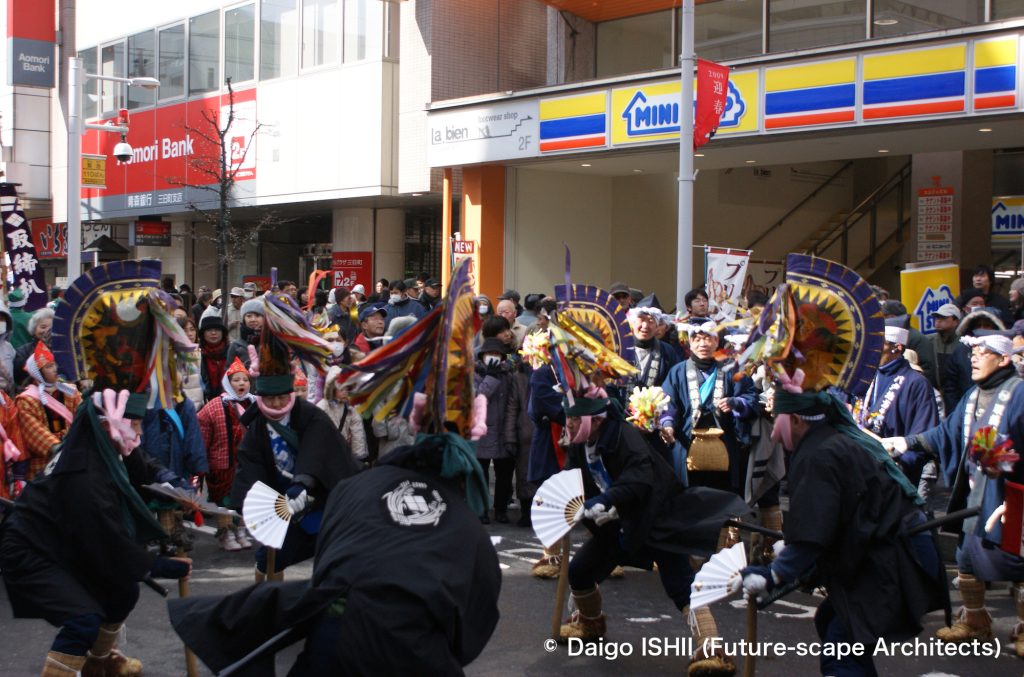
In "Issei-zuri", All groups perform Emburi on the main street in the downtown.

In "Issei-zuri", All groups perform Emburi on the main street in the downtown.
お庭えんぶり / Oniwa Emburi
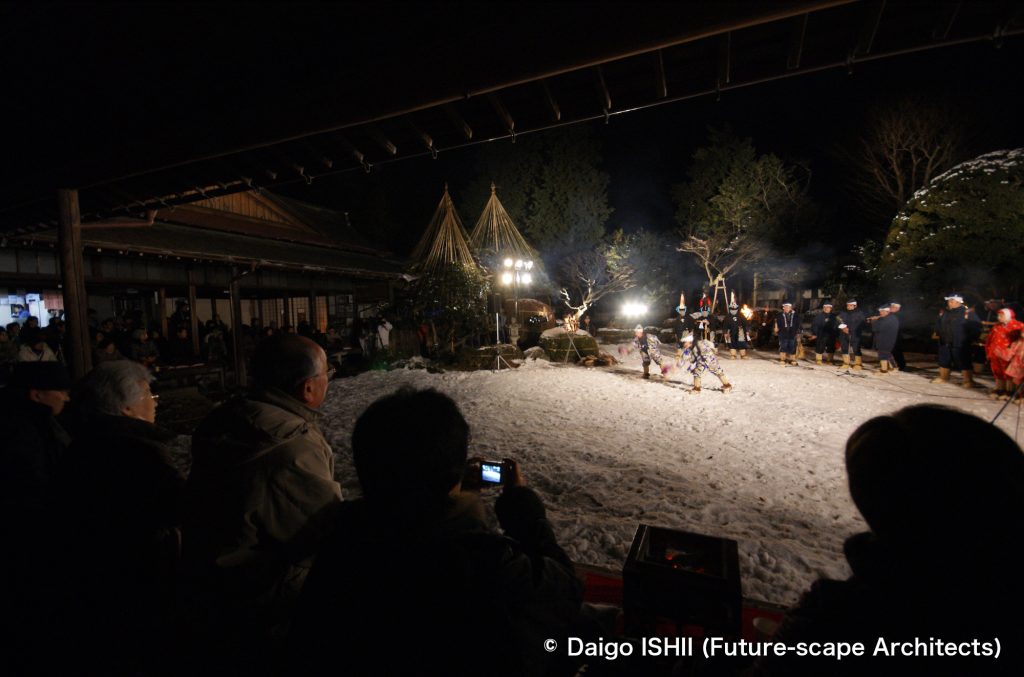
"Oniwa Emburi" held at the old mansion is a reproduction of the custom that they had danced at a mansion of influential people.
門付け / Kadoduke
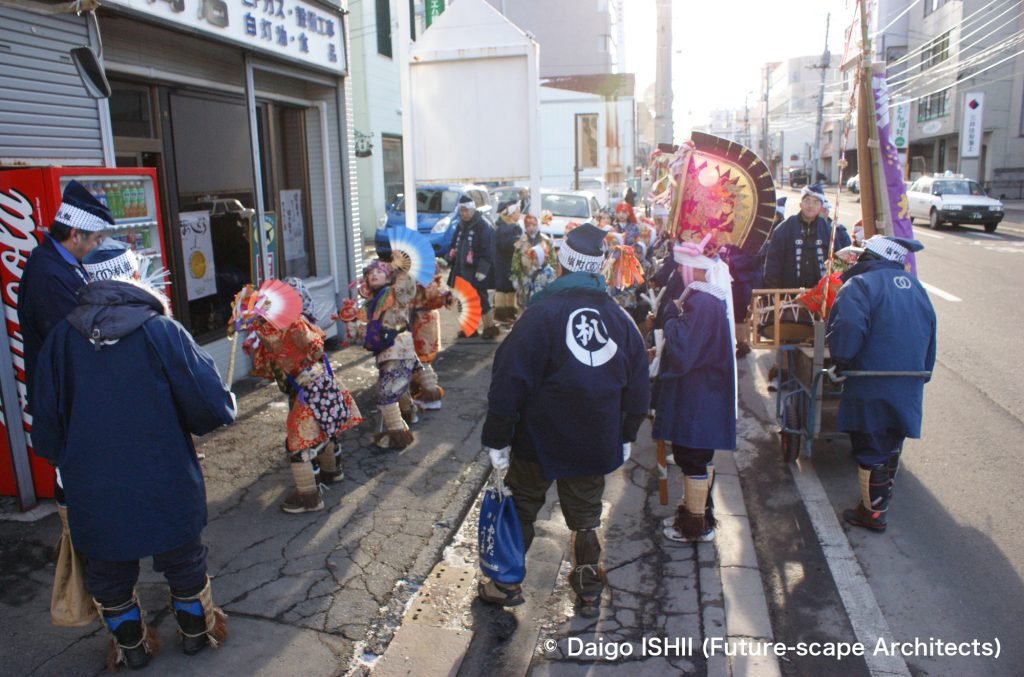
"Kadoduke" (the performance from door to door for donation) is performed in front of a shop. Shops and Japanese-style inns give them a gift money.
ご感想はこちらへ / Click here for your impressions
もっと詳しく → 旅行の時間 - 青森のお祭り:えんぶり - 1(八戸、青森、日本)
When you want to know more → Time of Travel - Traditional Festivals in Aomori : Emburi - 1 (Hachinohe, Aomori, Japan)
参考文献 / reference
"青森県の歴史散歩" (青森県高等学校地方史研究会編, 山川出版社, 2007)
"図説青森県の歴史" (成田稔・長谷川成一, 河出書房新社, 1991)
"郷土資料事典 青森県" (人文社, 1998)
"季刊あおもり草子第25号" (企画集団プリズム, 1985)
"えんぶり読本" (正部家種康, 伊吉書院, 1992)
"江戸時代ひとづくり風土記2青森" (農山村漁村文化協会, 1992)
"八戸市博物館 えんぶり展" (八戸市博物館, 2012)
"八戸三社大祭の歴史"(三浦忠司, 伊吉書院, 2007)
"八戸三社大祭公式ガイドブック"(八戸観光コンコンベンション協会, 2011)
えんぶり(八戸市役所ホームページ)
えんぶり(八戸観光コンベンション協会ホームページ)
写真の無断使用、転用はご遠慮下さい。/ Please do not use or upload our photos without permission.
